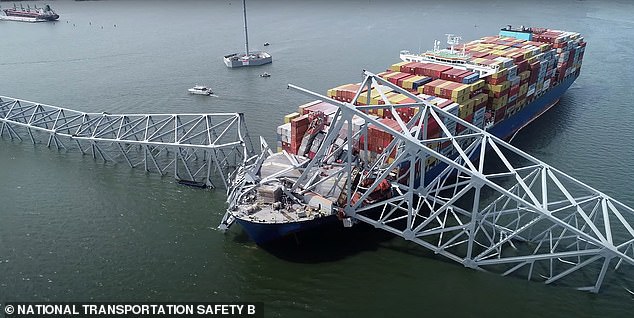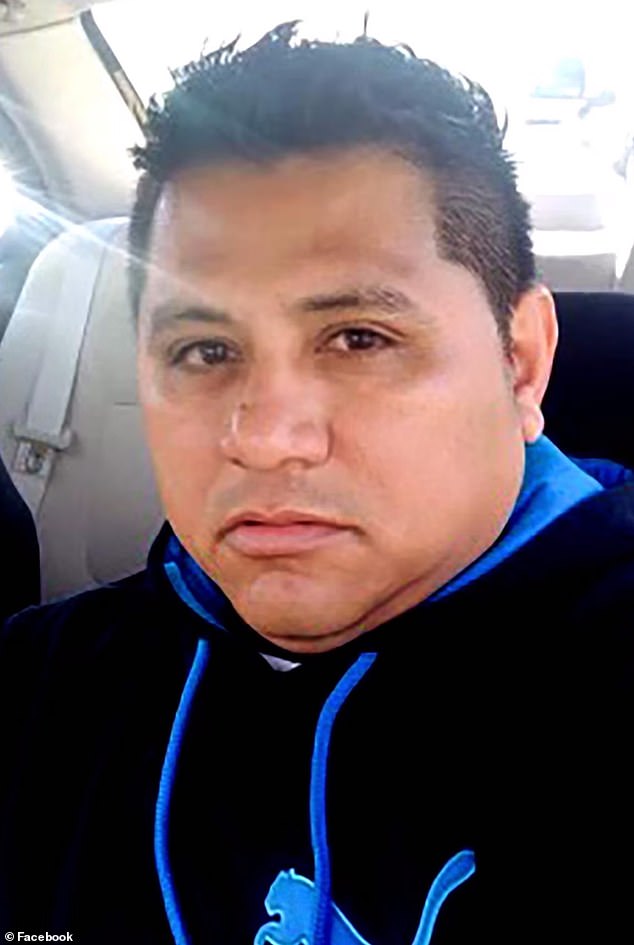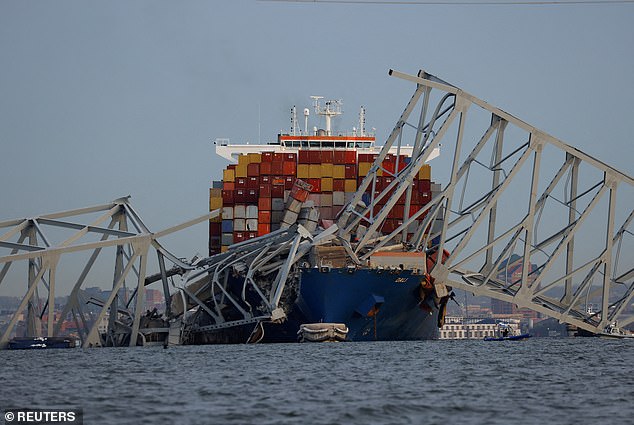FBI seized phones and laptops of Indian crew on Dali ship while probing Baltimore’s Francis Scott Key Bridge collapse
- SCI chaplains had to bring new SIM cards to stranded crew members of the Dali
- The FBI seized the phones and laptops during the early stages of the investigation
- Miguel Angel Luna Gonzalez was identified as the fifth victim of the crash
The FBI has seized phones and laptops from the crew of the Dali freighter that crashed into Baltimore’s Francis Scott Key Bridge last month.
On April 15, the FBI released a statement to the media saying there were agents aboard the Dali conducting court-approved “law enforcement activities.”
Crew members were eager to speak in their native language with trained chaplains from the Seamen’s Church Institute (SCI) when they finally boarded the ship.
The chaplains learned from the crew that their cellphones and computers had been seized by the FBI as part of the investigation, meaning they had lost their contact numbers, WeChat and WhatsApp applications they used to contact family and friends. crew members on board even more isolated.
On their second visit, the chaplains brought new SIM cards and other items on board the ship to give to the crew members. Maritime executive revealed.
Six members of a roadworks crew were killed on March 26 when a container ship lost power and crashed into one of the bridge’s supporting columns.

The 50 meter wide ship is stranded under the bridge. The plane arrived in Baltimore from Norfolk on Monday after earlier trips to New York City and Panama
SCI employees contacted U.S. Coast Guard authorities to care for the crew members and find out if and when their phones would be returned by the FBI.
The ship’s operator provided six new cellphones to give to the crew the next day – and promised that their original phones would be returned at some point.
As the investigation continues, the body of the fifth construction worker killed following the collapse of the Francis Scott Key Bridge more than a month ago was finally recovered yesterday.
Miguel Angel Luna Gonzalez, 49, of Glen Burnie, Maryland, has been identified as the victim found Wednesday, the Key Bridge Response Unified Command Announced.
Six members of a roadworks crew were killed on March 26 when a container ship lost power and crashed into one of the bridge’s supporting columns.

Miguel Angel Luna Gonzalez has been identified as the fifth victim found Wednesday

He was a 49-year-old man from Glen Burnie, Maryland
Five bodies have now been recovered, but one worker, Jose Mynor Lopez, has not been found.
They were all Latino immigrants who came to the United States from Mexico, Guatemala, El Salvador and Honduras.
Recovery teams found one of the missing construction vehicles on Wednesday and notified Maryland State Police, officials said.
State police investigators, Maryland Transportation Authority officers and the FBI arrived on the scene and found the body in a red truck. The State Police Underwater Recovery Team and Crime Scene Unit also assisted.
“We remain committed to the ongoing recovery operations, knowing that behind every person lost in this tragedy is a loving family,” Maryland State Police Capt. Roland Butler said in a statement.

Five bodies have now been recovered, but one worker, Jose Mynor Lopez, has not been found
“Along with our local, state and federal partners, we ask everyone to extend their deepest condolences and support to the families during this difficult time.”
The Dali container ship has been lying idle among the wreckage since its collapse, but crews plan to refloat and remove the ship so that more maritime traffic can resume through the Port of Baltimore.
Officials expect it to be removed by May 10, according to a news release from the Port of Baltimore.
